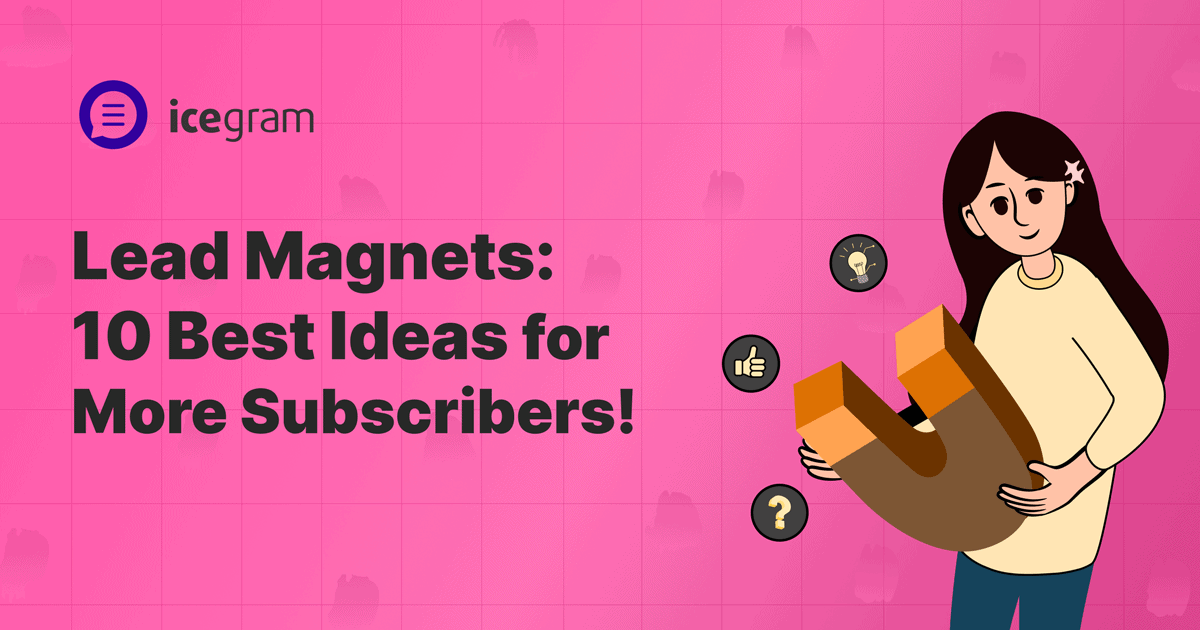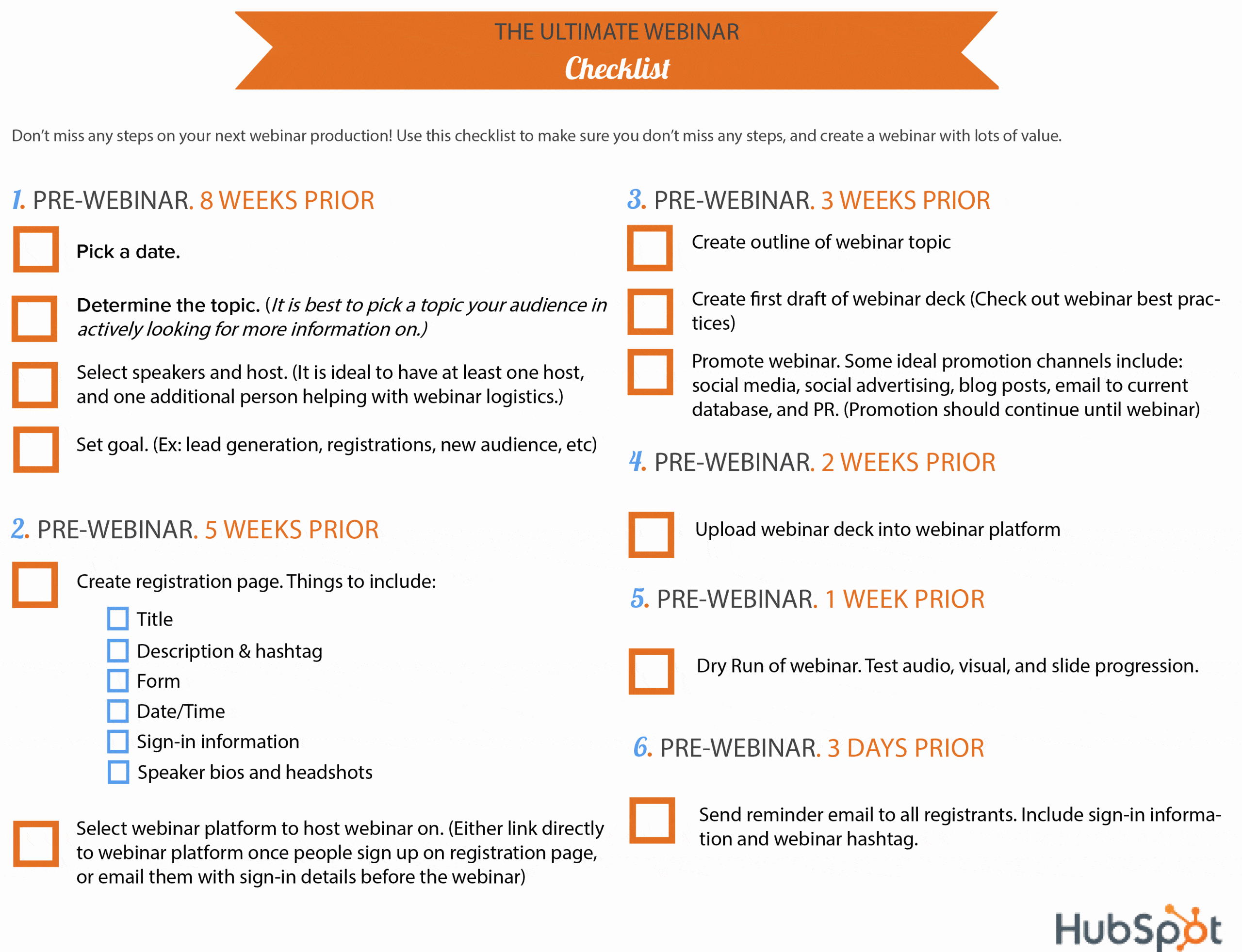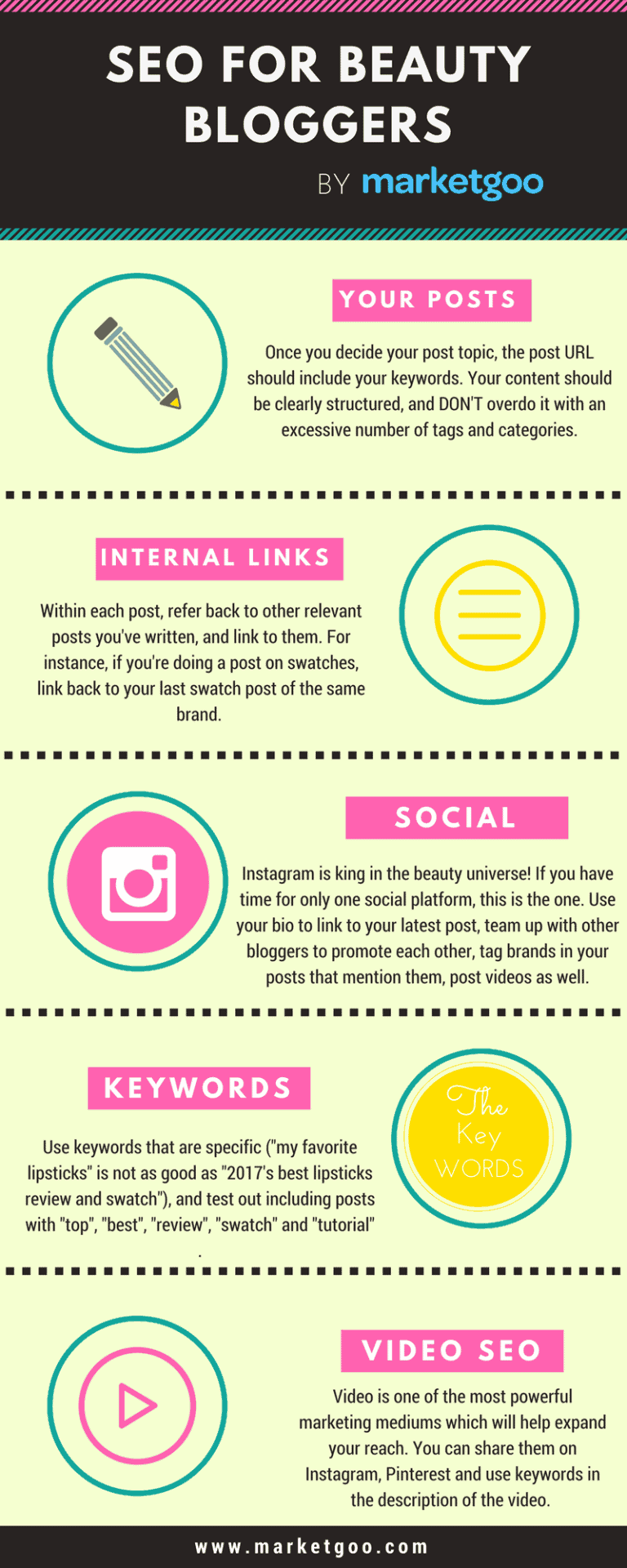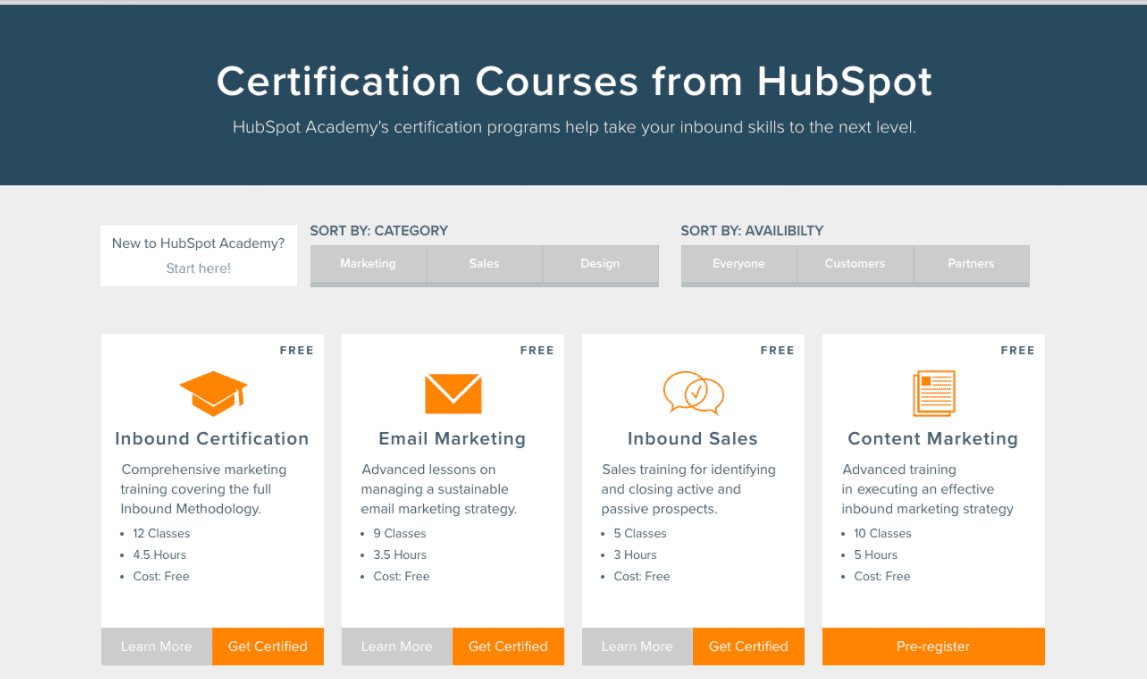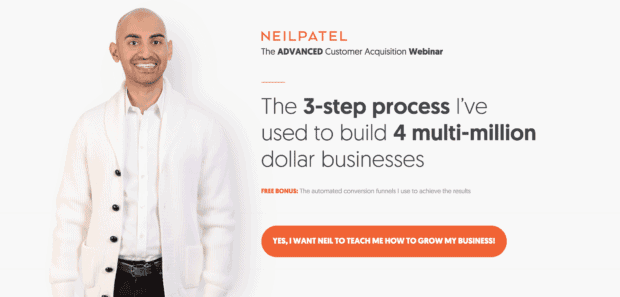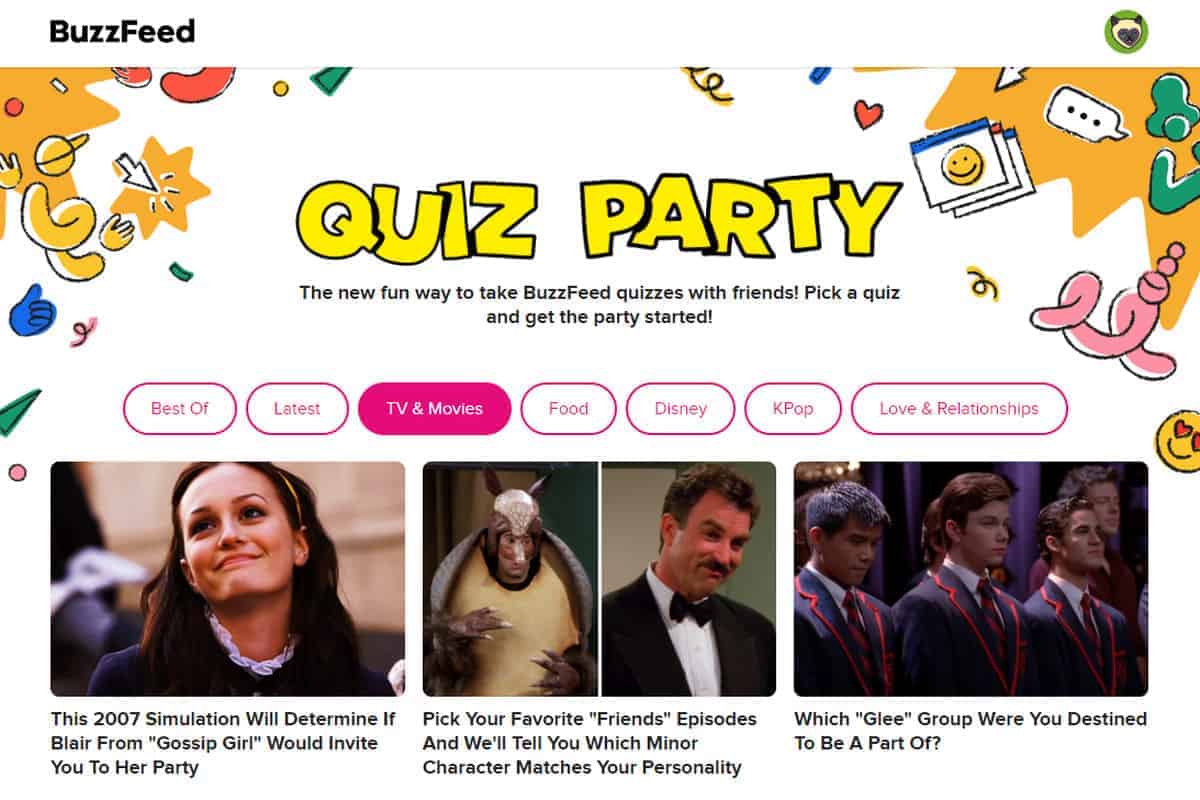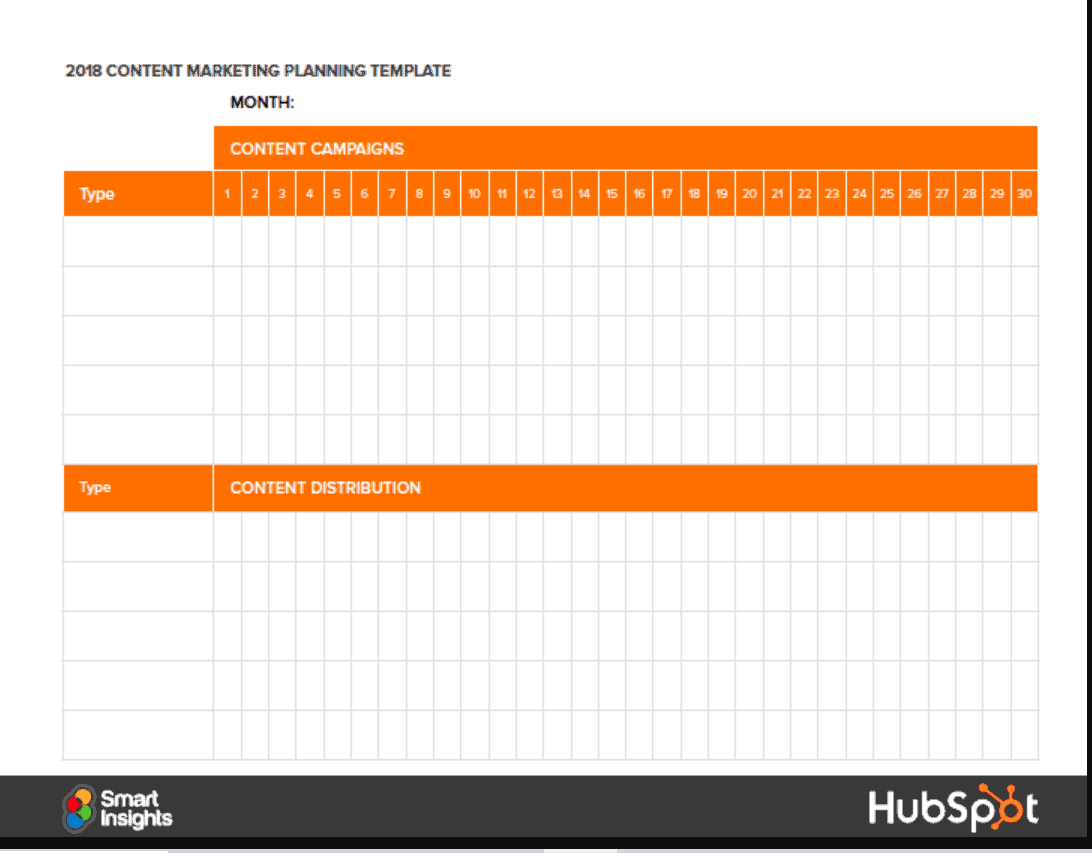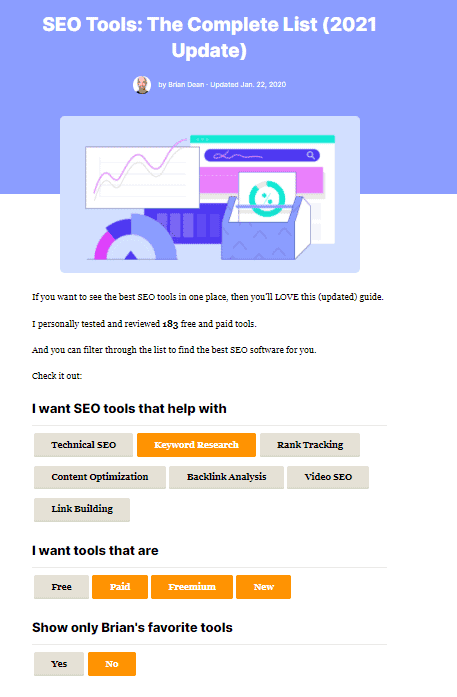“Content is king,” – said everyone.
So I started writing blogs, set up a few email marketing campaigns, and tried social media marketing, but nothing seemed to work well for me.
My email list wasn’t growing and the website bounce rate was also high. I always felt that I was missing an important piece of the puzzle.
Then came an aha moment with a revolutionary idea: Lead magnets
Setting up different types of lead magnets immediately grew list size and audience engagement. It also reduced bounce rate and improved session duration.
In this in-depth guide, let’s understand what lead magnets are, why they work, and the top 10 lead magnet ideas
What is a lead magnet?
A lead magnet is a valuable resource that you give away in exchange for your prospect’s email address. It’s typically downloadable content that people get after signing up for your email list.
Downloadable content like templates, eBooks, cheat sheets, checklists, white papers, videos etc, work best as lead magnets as they can educate the readers and offer them value-driven insights.
Lead magnets work for all domains and industries.
Here’s how lead magnets work:
- Step 1: A visitor comes to your website.
- Step 2: You show them a lead magnet offer.
- Step 3: The visitor accepts your offer, provides his/her contact information, and downloads the lead magnet.
- Step 4: Now the visitor is a potential lead. You can start sending offers, discount coupons, educational resources, and product information to engage and convert this lead.
Why lead magnets?
It’s fair to ask these questions: “Why do I have to create free resources?” “Why is a lead magnet even important?” “What efforts does it take to create a lead magnet?”
Let’s dig deeper.
To be honest, every consumer is highly protective when it comes to their personal information. They already receive 120+ emails every day. They don’t want another marketing email in their inbox. So, if you ask for their contact details without offering anything in return, they’re probably just going to skip.
But with lead magnets, things change. If your prospects feel that they’re receiving something valuable in exchange for their contact information, they can change their mind. The generic newsletter signup requests don’t work that well now. To get something from the prospects, you have to offer something to them. And it’s got to be something instantly useful to them.
For example, you publish a blog titled “Top 10 ways to use Chatbots to improve Customer Service”, and at the end of the blog, you add a CTA (call to action) seeking the readers to join your email list.
Alternatively, you create a downloadable e-book on the same topic and include some strategies and case studies as well. This time, you’re writing a shorter blog, keeping the most important content in the ebook. In the blog, you ask them to download this ebook for free, just by providing their email and subscribing to your list.
A comprehensive lead magnet checklist
The lead magnet you offer must tick all these boxes:
- Does the lead magnet solve a problem?
- Is it too generic? (The more specific, the better)
- Does it contain something unique? Something not found elsewhere?
- Is it easily understandable?
- Does it include some tested strategies that are easily deployable?
- Is the lead magnet relevant to your brand promise?
- Are you making it easy for people to get it?
Check out Icegram Engage’s extensive library to get some cool lead magnet ideas and to build content email marketing strategies to generate tons of marketing leads.
10 best lead magnet ideas and example
There are tons of lead magnets. But wondering how each one can help?
Check this out:
Checklists
Checklists or to-do lists are actionable lists that almost everybody needs. More so because most of us are now finding a digital alternative to pens and diaries.
Also, checklists are the easiest to create. You don’t need any fancy apps to create one. Just create one using MS Word or Google Docs. Add some pointers, boxes, use vibrant colors, add your brand’s logo and your checklist is ready.
Here are some common checklist lead magnet ideas that work for the content / online marketing industry:
- Blog post ideas checklist (a list of how to research, write, publish and market blog posts)
- Webinar checklists (a list of tools, technologies, tasks, precautions, and pitfalls of arranging a webinar)
- An SEO checklist (a list of all points to ensure that your site is SEO optimized)
Extra brownie points to checklists that are printable. That way, people who are still comfortable with the old-school methods can tick off things from their to-do lists with a pen.
Once the checklist is done, combine it with a two-step opt-in form. In the first step, audiences need to fill in their contact information and in the second step, they can download the lead magnet.
Let’s see how HubSpot created its webinar checklist:
HubSpot has created a checklist with its brand colors. We can see how HubSpot summed up the entire process of arranging a webinar in 6 pointers.
Arranging a webinar involves a lot of aspects. So if I use it, I will know what to do and when. This is definitely a good lead magnet example.
Cheat sheets
The format of a checklist and a cheat sheet can be similar. However, a cheat sheet is different in the sense that it offers us some tricks that we can follow again and again. Cheat sheets help us get results with some secret tips that work every time.
Cheat sheets are tempting. If I’m a blogger and I am always looking for tricks to rank my blog on Google’s first page. If I get a free cheat sheet that helps me with the tricks to rank every blog on Google’s first page, will I not want it? Of course, I will.
A downloadable cheat sheet is an example of one of those lead magnets that is very helpful to your audience. Once they download it, they don’t have to remember complex sequences of tasks. They are likely to use it again and again. That’s totally a win-win situation for them.
Let us go through the SEO cheat sheet from Marketgoo:
This cheat sheet is especially for beauty bloggers. We can see how Marketgoo has narrowed down the essentials of beauty blogging in five easy steps.
This cheat sheet helps us learn some of the major beauty blogging hacks, like:
- We must not overdo our content with too many keywords and tags.
- We must include internal links to our posts.
- Beauty bloggers must include their latest blog links in their Instagram bios.
- We should use specific keywords.
- We also learned that videos are a powerful tool and beauty bloggers should focus on video SEO as well.
Mini-courses and tutorials
A lead magnet idea that has been doing the rounds lately is mini-courses. These are educational courses and tutorials. I recently found out that online education is a $275 billion industry. Also, the best thing is that you don’t need any specific qualifications or credentials to launch your online courses.
Also, there are no specific rules or patterns for hosting an online mini-course. You can include blogs, videos, slides, quizzes, downloadable PDFs, and any other resource that relates to the course.
Let us find out how HubSpot offers free courses and generates more marketing leads:
Check out how HubSpot offers a range of mini-courses that cover different digital marketing areas like email marketing, content marketing, inbound sales, and so on. All these courses are free and you need to sign up for them with your contact details.
Isn’t that a great lead magnet idea? HubSpot offers a lot of tangible value for free to the audience and asks for their contact information in return. These courses are extremely entertaining as HubSpot has made a cool combination of videos, downloadable templates, and so on.
Mini-courses are a great way to share your learning with your community. But sure, they
can be a lot more work to create.
Bonus Tip: Whenever you launch your mini-course, don’t forget to include the number of steps involved in the course/tutorial. For example, “Five Steps to Master Email Marketing” or “Three Steps to Plan your Blog Topics”. We should remember that our audiences want to know how many stages are involved in the course and how soon they can complete it.
Webinars
Webinars are getting a lot of attention these days. Webinars score high on the “urgency” factor. So, organizing a free webinar could serve as a cool lead magnet idea.
Let me explain the “urgency” factor here. Suppose you see a social media post that invites you to join a “Live Webinar on Lead Generation Strategies on the 20th of March, from 6 pm to 7 pm.”
This post can easily create a sense of FOMO (Fear of Missing Out) in your mind. That’s because webinars take place for a limited time and unlike regular videos or podcasts, you cannot have access to the information afterwards. That’s exactly why you may end up registering for this webinar.
Also, arranging a webinar is not something to freak out about. Yes, there are lots of moving parts in a webinar and you need to figure out technological solutions. But especially after COVID-19, a lot of us are used to hosting and participating in online meetings. Webinars are quite similar.
Lead magnet webinars don’t have to be too complex. They don’t have to be long with multiple speakers. Short webinars with 3-4 specific things that your audience can learn are a perfect lead magnet example.
Check out how Neil Patel turned his homepage into a webinar registration page as a lead magnet!
Here is what happens in a webinar:
- Webinars that offer you guides, instructions, and tips to achieve something.
- Webinars that offer discount codes or invite you to purchase something from them.
If you’re using the webinar as a lead magnet idea, it’s better to make it knowledge-centric. Trying to make a sale out of a lead magnet webinar doesn’t sound good. Just try to offer your audience some value and collect their contact information in exchange. Selling can wait. Build trust first.
Also, don’t forget that dates/times are everything in a webinar. So, your CTA must include these two factors. Do not forget to mention the timezone as well!
Pro Tip: Don’t have a clue about what to present on your very first webinar? Convert a recent blog from your website into a PowerPoint presentation with images, charts, and visuals. You’re almost done. Now, present it on a live video platform.
Quizzes
One of the reasons can be that quizzes are super easy and entertaining.
Here’s how a quiz lead magnet works: You set up a witty or fun quiz on our website. At the end of the quiz, you request the participant to provide their email address to know the quiz results. Because they have answered the questions, they want to know the results and how they compare with others.
Quizzes can be about a common interest (Harry Potter / NBA / Celebrities), personality traits (types/emotions/stereotypes), or even puzzles. If I can successfully create a quiz that either entertains them or provokes their thoughts, I have a very good chance of generating new leads.
Does it matter if Blair invites me to her party or which “Friends” minor character matches my personality? No, it doesn’t!
But will I click on these quizzes to find out? Definitely!
So, if you’re planning to arrange a lead magnet campaign, you can always start with a quiz!
Mini e-books
E-books used to be a massive lead generator even a few years ago. But nowadays, their popularity as a lead magnet is declining. With checklists and cheat sheets around, e-books don’t work very well anymore. People don’t want to consume a long e-book when they can easily get hold of all those points at a quicker speed using checklists.
That’s exactly why I recommend mini e-books. Mini e-books are shorter in length as compared to regular e-books and have relatively higher chances of conversion.
A good practice can be to merge a few compelling blogs together to make an ebook.
For example, suppose these are a few blogs that have been published on your website:
- Best Italian Food Items of All Time
- Five Things to Eat on Your First Visit to Italy
- 10 Italian Desserts Everyone Should Try at Least Once
- Three Classic Italian Recipes You Must Know
You can now merge all these blogs into a mini e-book titled – Italian Food 101: A Complete Guide.
With this e-book, you’re putting all the similar topics in a single place. Your audiences will not have to look for different articles to find out about “Italian food”. And that’s exactly what a good
lead magnet should try to do. Helping our audiences to attain more value with less effort.
Check how our WordPress Plugin Icegram Engage can help you add compelling CTAs.
Planners & templates
Take a look at HubSpot’s content marketing planner:
HubSpot has been distributing similar planners as their lead magnets for a while now. Their planners are industry-specific.
You can create a simple planner like HubSpot’s using Microsoft Excel. The planner can be anything about your niche that is organized on a calendar. Your audience can download and print it, and fill in their own entries. They are going to use this for a longer time, which means they will see your brand over a longer period.
Similar to planners, you can also distribute templates. Templates are resources that the audience can download, customize and use on their own. Depending on your niche and audience, these templates can be something that will give a kickstart for specific challenges your audience has.
A lead magnet email template can help create a structured and effective email sequence. Building an email list with a lead magnet is a proven way to grow your audience and increase engagement.
For example:
- Email design templates
- Cashflow analysis and business valuation worksheets
- Life goal planners with investment calculators
- Cold email outreach templates
- Science quiz printable for Grade 6
Be specific about your planners and templates and create a handful of them. Write a blog post and offer the template as a lead magnet.
A complete resource guide
When we start something for the first time, how do we begin our journey? We learn from trial and error. But what if you had a guide? A guide may not always answer every question we have. But it can surely tell you where to find your answers. A free guide that lists different resources can be a compelling lead magnet.
Some of the top lead magnet ideas include free trials, coupons, exclusive discounts, webinars, and educational resources. It’s important to ensure that your lead magnet is high-quality, relevant, and valuable to your target audience.
Resource guides are a compilation of different tools, websites, blog posts, and videos that can help you achieve results. This type of lead magnet works best for beginners who are new to a topic.
Have a look at this SEO resource guide from Backlinko:
This is like an encyclopedia of different SEO tools! You need to click on the type of SEO tool you’re looking for and you’ll get a large array of tools that can fulfill your SEO requirements.
Workbooks
Workbooks have been effective lead magnets for many. If your target audience is in the self-help or similar niche, “fill-in yourself” workbooks are great lead magnets.
As a matter of fact, they are great for reviews, journaling, and deeper explorations on any topic. The hidden advantage of workbooks is that they establish you, the creator, as an expert on the topic. The audience automatically starts treating you as a trusted authority on the subject.
Here’s an example of Neil Patel’s lead magnet workbook:
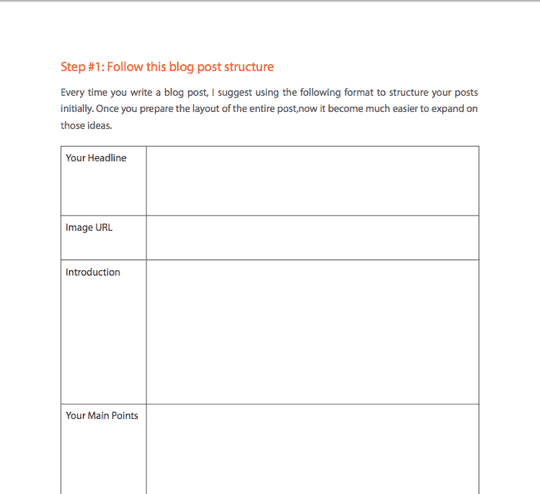
The best thing about this workbook is its minimalism. You can see how there is ample space left for us to write what we have learned or what we would include in a blog. It is another downloadable and printable lead magnet.
A workbook encourages learning through reflection. With a workbook, you can encourage your audiences to learn at their own pace. They can jot down whatever they learn from their experiences in the workbook.
Like for Neil Patel’s workbook, if a beginner refers to this lead magnet, they can create a well-structured blog post at the end. You can apply this strategy in the following way:
Say, you write a blog on “11 Simple Tricks to Increase Email Open Rates
Today” and add a CTA like this: “Download our Content Email Marketing Workbook for Free!
Videos
Videos can also be good lead magnets. If you’re bored of tutorials, ebooks, and infographics, you should give a shot to video lead magnets. Videos are more engaging.
Videos don’t always have to be some leader or coach preaching about how a brand’s products and services can benefit the customers. Instead, you can create videos with real people. For example, if you upload a video where a customer speaks about your product/service and how they’ve benefited from it, the perceived value will be higher.
A well-shot and edited video can be engaging as well as informative at the same time. That’s exactly why a 10-minute-long video can grab 2x more lead generation and conversion than a 50-page-long eBook.
Also, you should know that the majority of marketers are already using videos as their lead magnet. Maybe it’s time for you to join the bandwagon!
Conclusion
Let’s recap what we learned:
- Lead magnets increase opt-in conversion and signups.
- They are also a great way to establish your authority.
- Different types of lead magnets work for different audiences and have different levels of effort requirements.
- Quizzes, workbooks, and checklists can be easy to create and offer good value.
- Videos, webinars, and books still work great but require higher effort. Use them where appropriate.
- You can set up multiple lead magnets on your site or on social media.
- Most importantly, make sure the lead magnet offers good value and explain that value on your opt-in / landing page.
Now that you’ve understood about lead magnets and different types of lead generation strategies, it’s time for you to start. Pick any one or more of the lead magnet ideas from our list and plan your campaign. Let us know in the comments about your experience with lead magnets.
If you are looking for a helping hand, why not check out Icegram Engage? Get the plugin and access 120+ ready-made onsite campaigns, lead magnet templates, CTAs, and subscription forms to start with.
Then why wait? Get started now!
FAQ
How long should a lead magnet be?
There’s no fixed length. A checklist or cheat sheet could be 1–2 pages, while an eBook or report may be 10–15 pages. The focus should be on quality over quantity—delivering just enough value to create interest without overwhelming the user.
Do lead magnets work for B2B and B2C businesses alike?
Yes. B2B businesses often use whitepapers, industry reports, and webinars, while B2C businesses lean towards discounts, giveaways, or downloadable templates. The key is tailoring the offer to what your ideal customer values most.
Should I create multiple lead magnets?
Yes, having multiple lead magnets allows you to segment your audience better. For example, different magnets can target beginners vs. advanced users or different industries. This leads to more personalized and effective email marketing.
How often should I update my lead magnets?
Update them whenever the content becomes outdated or if you’re launching new services/products. For evergreen topics, review them every 6–12 months to ensure they stay relevant.

